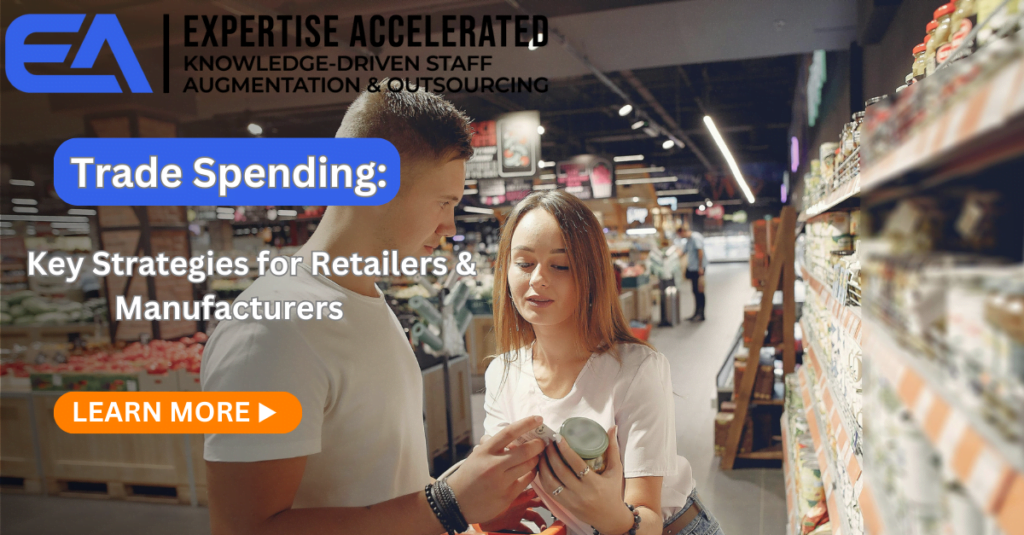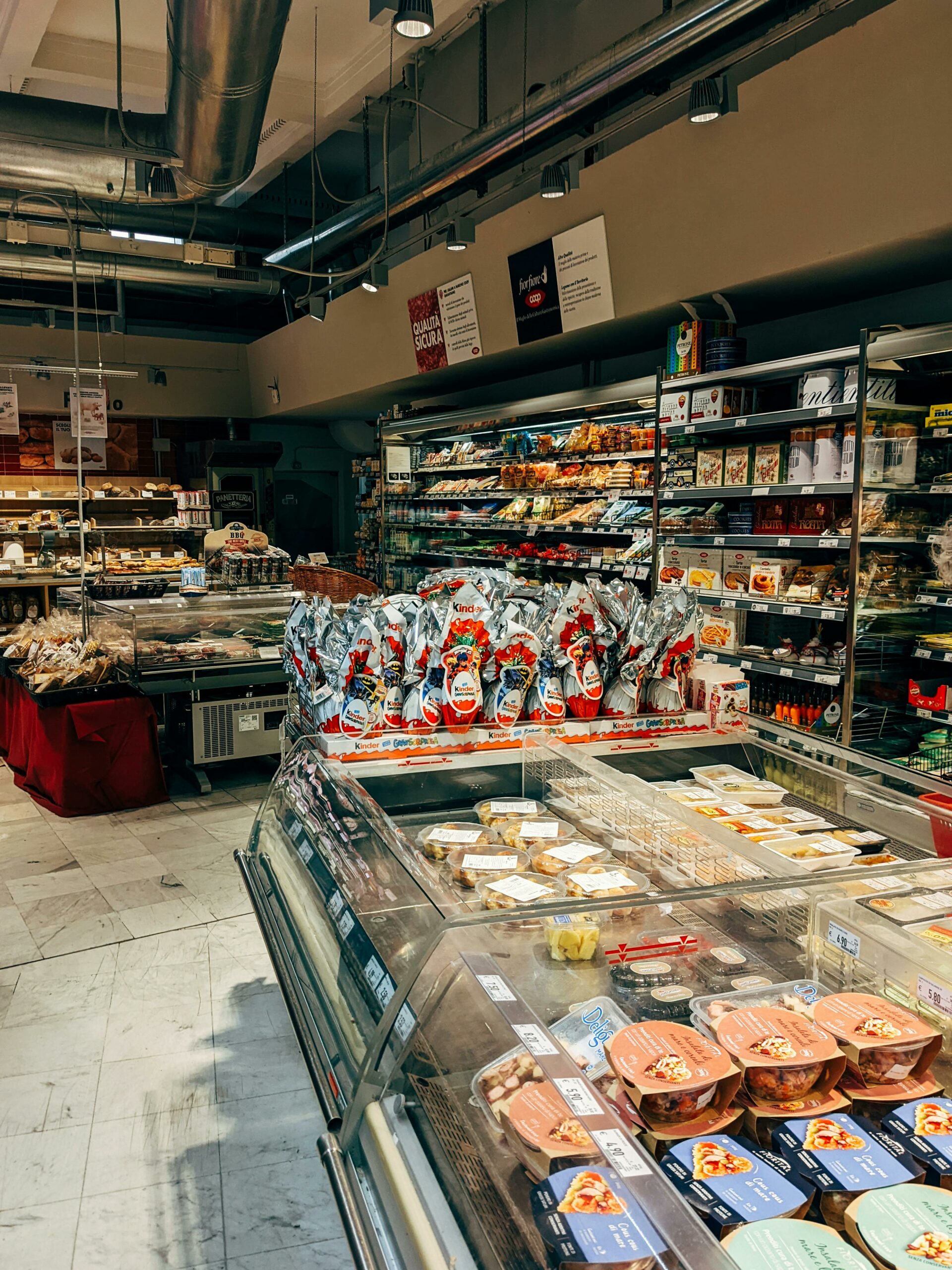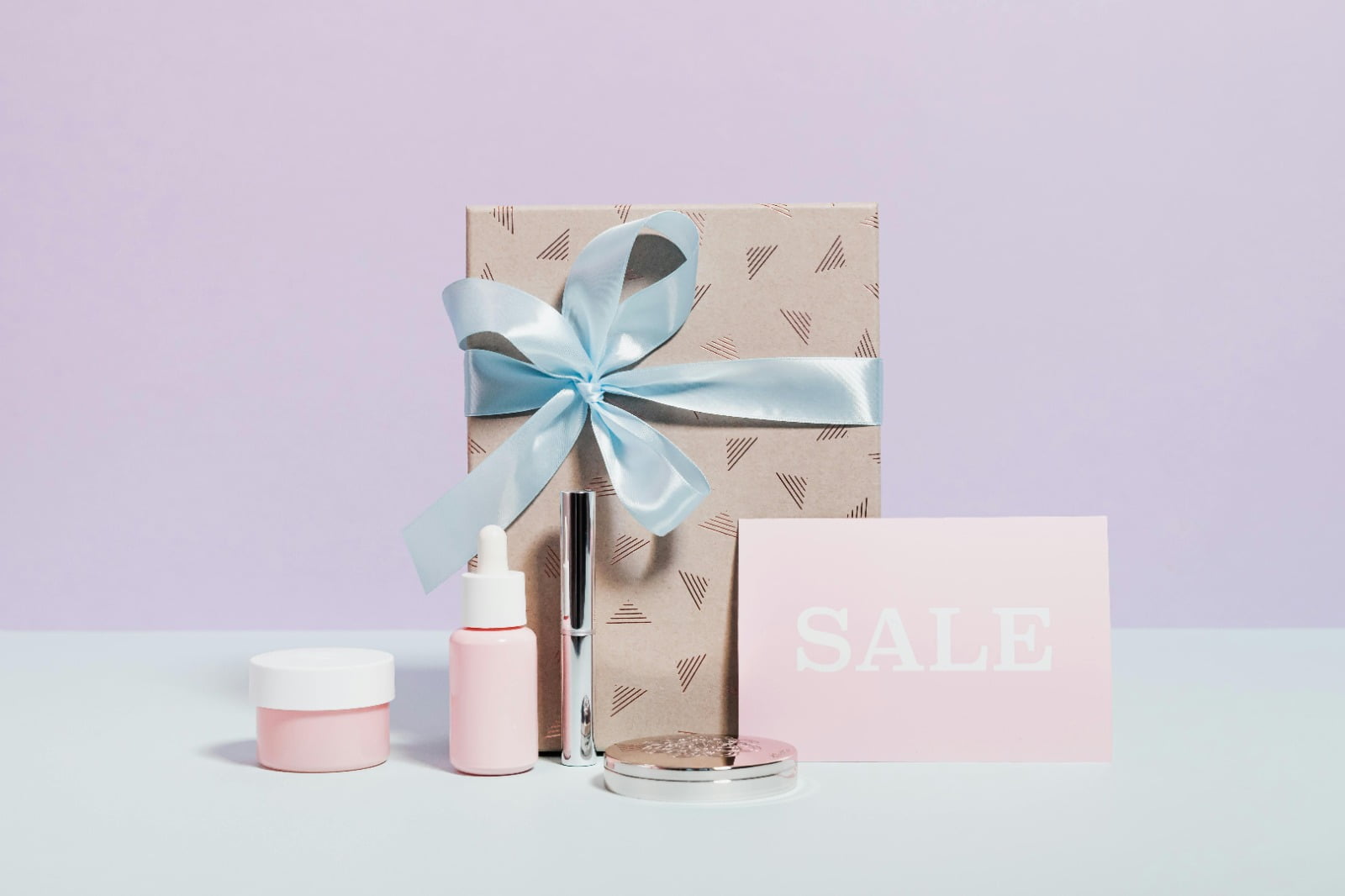Using trade spend wisely can boost your revenue by 20 to 40%. It won’t happen overnight, but a trade promotion can quickly make a big difference in your earnings with the right strategies.
Trade spending is actually controllable. With smart planning and action, your numbers rise and your business grows.
Our latest blog post lists the key strategies to make every dollar spent work harder in your next trade promotion. Let’s get started.
What is Trade Spend?
Trade spend is the budget manufacturers assign to the sales and marketing of their products in the retail sector. It is a boatload of money sometimes ranking as the top or second-largest cost in the P&L.
From volume pricing and product allowances to slotting fees and joint marketing campaigns, companies use various ways of trade spend to promote their products.
A trade spend should create value regardless of how the company plans to use it in the retail sector. It should enhance visibility and boost sales otherwise it risks being a waste of money. One challenge many companies encounter is accurately measuring the ROI of their trade spend. Later in this blog, we’ll explore ways to optimize ROI and get the most out of your investment.

What is Trade Spend in CPG?
The Trade spending in the Consumer Packaged Goods (CPG) industry is the CPG company‘s budget to promote its products. Trade Spend helps CPG brands to stand out from their competition. You’re more likely to choose the cornflakes that are prominently placed in an obvious shelf space in Walmart.
The CPG industry is a highly competitive market, utilizing trade spend helps brands enhance their visibility, drive product placement, and increase sales.
 Have you ever taken advantage of a buy-one-get-one-free offer on Pizza Bagels at Walmart? This promotion results from a trade spend allocation by the product’s manufacturer. They invested in trade spend to secure prominent placement and promotional space within Walmart, aiming to enhance product visibility and increase sales.
Have you ever taken advantage of a buy-one-get-one-free offer on Pizza Bagels at Walmart? This promotion results from a trade spend allocation by the product’s manufacturer. They invested in trade spend to secure prominent placement and promotional space within Walmart, aiming to enhance product visibility and increase sales.
Trade Spending: Key Strategies for Retailers and Manufacturers
Trade spending is (and should be) a major priority for CPG companies. It influences everything from retail distribution to pricing strategies and directly impacts your ability to promote products with retailers. Managing trade spending effectively is key to driving sales and staying competitive in the market.
Following are the top 7 trade spending strategies for retailers and manufacturers:
1. Collaborative Planning
Retailers often have insights into customer preferences, while manufacturers understand production and distribution challenges. That’s why, open communication between retailers and manufacturers is essential for successful trade spend strategies. Together, they can develop joint business plans that benefit both sides.
Collaboration ensures both parties are aligned on promotional objectives, product placement, and pricing.
For emerging CPG brands, it’s great to develop a clear trade objectives and strategies plan with measurements and KPIs. Ensuring proper roles and responsibilities are assigned early on in your organization for smooth execution of strategies.
It is also a good idea for brands, especially, the ones with limited budgets, to run smaller-scale promotions with different retailers and assess which type of promotion generates the best results. Comparison of volume and profit between the different retailers can help identify the best trade spend strategy for the new brands that want to increase their market share.
Effective communication is not just key between retailers and manufacturers. It is also essential that the brands plan their strategy and communicate their promotion clearly with their target audience. Many CPG brands mess up with this.
2. Data-Driven Decision Making
Both retailers and manufacturers must use data to guide their trade spending decisions. Analyzing past promotions, sales data, and customer behavior helps understand the most effective trade promotions.
Data helps to identify which products and promotions are generating the best ROI.
Here’s how you can improve your ROI trade spend management:
1. Baseline Performance
Assess your product’s baseline volume when it is not on promotion.
2. Evaluate Promotional Impact
Compare the sales volume and revenue of the product when the product was not on promotion vs. during promotion. Check out the example below that compares the before and during promotion sales volume and revenue.
3. Calculate ROI
For instance, you are a brand that sells potato chips. On average, you sell 100 units per store per week. During promotion, you sell 300 units (3 times the average units).
Sales velocity has increased due to the promotions however, let’s see whether you have generated a positive ROI:
During promotions, you spend 50% off the cost of the chips. Thus one bag of chips was sold for $4 instead of $8.
| Before promotion | During promotion |
| Selling price of chips= $8 | Selling price of chips= $4 |
| Sales volume per store per week= 100 | Sales volume per store per week= 300 |
| Total sales before promotion= $800 (8*100) | Total sales during promotion= $1200 (4*300) |
ROI= 1200-800= $400
Questions to consider:
Is the ROI positive?
How big was the positive ROI?
How elastic was the ROI?
Elasticity of the ROI means how sensitive is the ROI to changes in various factors, such as trade spending, marketing efforts, or other inputs.
For instance, you test another trade spend promotion by running a two-for-four campaign. You offer to sell 2 bags of chips for the price of one ($4 promo price).
Analyze results and check whether you get a similar uplift or higher as the previous promotion. Optimize the promotion that yields the higher ROI.
Ask your team:
How can we make every dollar of trade promotion work harder next year than it did this year?
What steps can we take to strengthen our relationship with customers so they see us as an even better partner moving forward?
3. Segmenting Promotions
Talk about how inflation is leading to retailers lowering prices and focusing on volume.
Not all promotions are equal. Retailers and manufacturers need to segment their promotions based on product categories, target customers, and geographic regions. For instance, promotions for premium products may require a different approach than those for mass-market items.
Segmenting promotions helps in tailoring trade spend for specific audiences, maximizing effectiveness.
Personalized Promotions
According to a study by Incisiv and Talkdesk, customers are willing to spend more when they are provided a personalized shopping experience. Via personalized promotions, brands can target different customer segments.
Personalized promotions should not be limited to the retail stores. In 2024, they have to extend across all channels including digital touch points to be successful. Check out Google’s latest attempt, virtual try-on, to improve its ability to help shoppers buy apparel online. Personalized experience at its finest?
 Pro Tip: Focus spending on targeted performance-related activities, that are based on brand objectives. Examples of performance-related activities are POS promotions, Ads, and displays.
Pro Tip: Focus spending on targeted performance-related activities, that are based on brand objectives. Examples of performance-related activities are POS promotions, Ads, and displays.
4. Monitoring and Adjusting in Real-Time
The retail environment is dynamic, and promotions don’t always go as planned. Both manufacturers and retailers must monitor the performance of trade promotions in real-time and adjust their strategies when necessary. This agility allows for a quick response to underperforming campaigns or shifting market conditions, ensuring that trade spending is not wasted.
5. Incentivizing Retail Execution
Manufacturers often struggle with poor execution of trade promotions at the retail level.
When a company doesn’t execute a promotion correctly, it wastes time and money. McKinsey reports CPG companies spend up to 20% of their revenue on promotions, but they often don’t get the full value from them, missing out on growth opportunities.
Stock shortages, improper product placement, and untrained staff can hinder the success of even the best-planned promotions.
To mitigate this, manufacturers can incentivize retailers with rewards for proper promotion execution, ensuring that products are adequately stocked, displayed, and marketed.
Forecasting the impact of promotions via predictive analytics and historical sales data can also prevent stock shortages.
6. Balancing Short-Term and Long-Term Goals
While many trade spending initiatives focus on short-term sales boosts, retailers and manufacturers must balance this with long-term brand building.
In the 2021 NPS and CX Benchmarks report, one of the most surprising findings was that 44% of businesses didn’t know their churn or retention rates. Some promotions might not deliver immediate sales but may increase customer loyalty, brand recognition, or long-term market share. That’s why companies should combine discount-driven promotions with brand-building activities and track how their trade spend affects customer loyalty over time.
A blend of short-term and long-term goals ensures a sustainable and profitable strategy.
7. Utilizing (Artificial Intelligence) AI for Better Visibility
Recently, Colgate-Palmolive has seen real success with its AI-fueled promotion schedules. The company is witnessing efficient promotions by using technology and AI.
Colgate-Palmolive is now using AI to evaluate every piece of digital content globally by comparing it to past data. This helps them feel more confident about how well their promotions will perform before they launch them.
CEO Noel Wallace spoke at an investors’ conference about how AI has made it easier for them to gain insights on past promotions using AI and what is working and what’s not.
Colgate may be a leading brand, but emerging CPG companies can learn from their strategies and success. Especially, if you are still managing trade spending with outdated systems, which leads to inefficiencies and poor visibility into spending performance.
Investing in trade promotion management (TPM) and trade promotion optimization (TPO) software can provide better visibility into how trade spend is performing, helping companies optimize their strategies.
Maximize Every Dollar Spent With Expertise Accelerated
Most brands cannot provide an accurate assessment of either the dollars spent or planned. The result is millions of dollars spent on trade promotions that are unverified.
If your company can track how much it’s spent on trade for a promoted product group, either by cost per case or as a percentage of revenue, then you’re already ahead of the game! It’s a clear sign that you’re keeping a close eye on your trade spending, which is key to managing costs and boosting profitability.
For trade promotion management to really succeed, you need the right expertise and systems to make it all work smoothly. Expertise Accelerated can provide support in Trade Spend Management to the CPG industry.
Our Trade Promotions Management Services not only protect companies from campaigns with poor ROI but also help maximize the impact of every dollar spent, ensuring your promotions drive real value. Contact us today and take the first step towards successful trade promotions management.



 Pro Tip:
Pro Tip: 